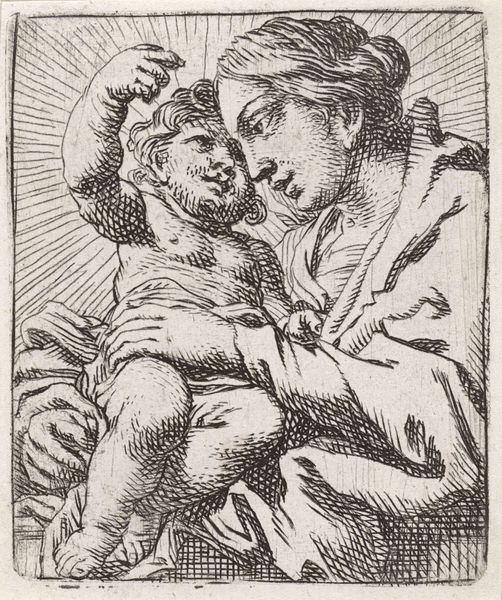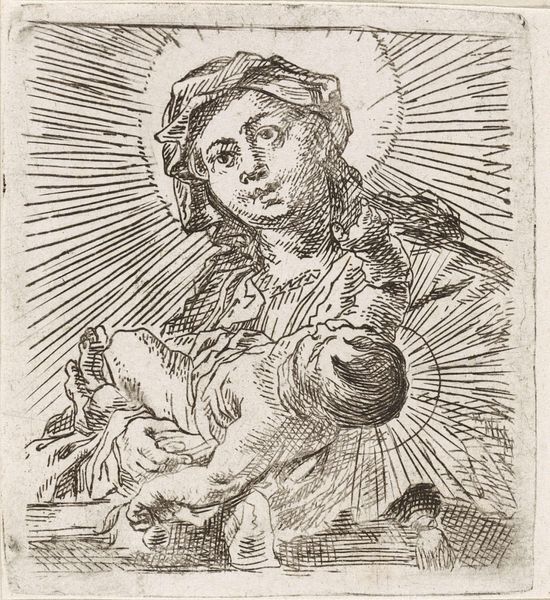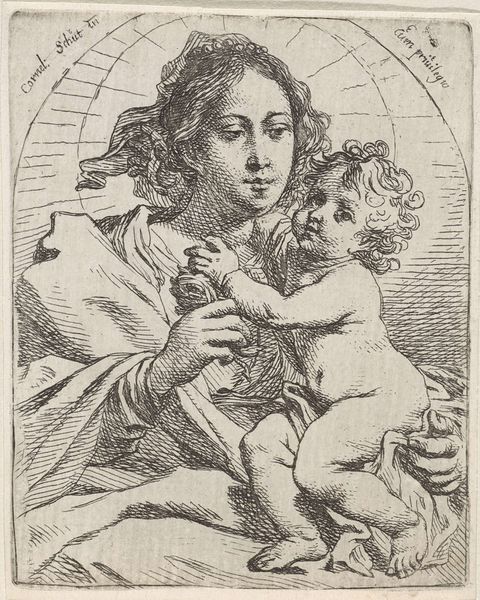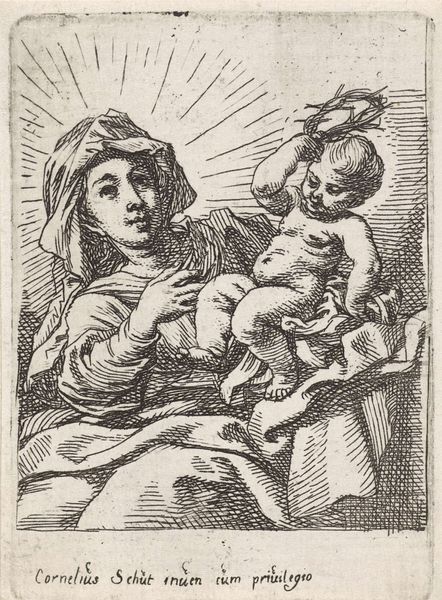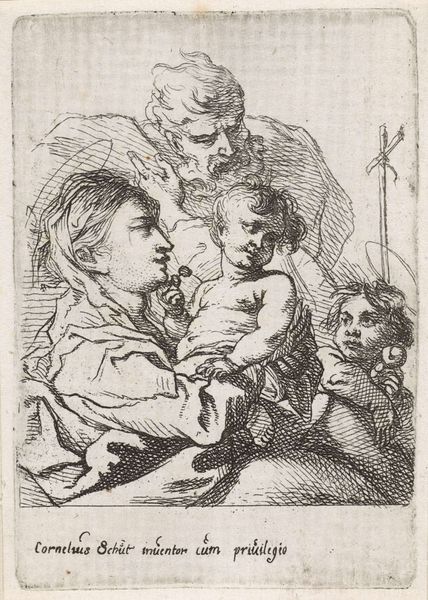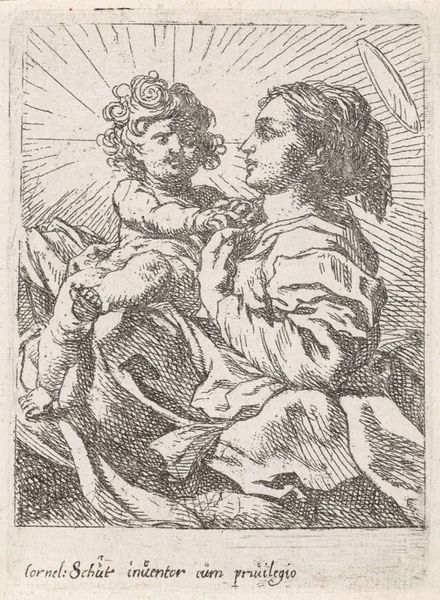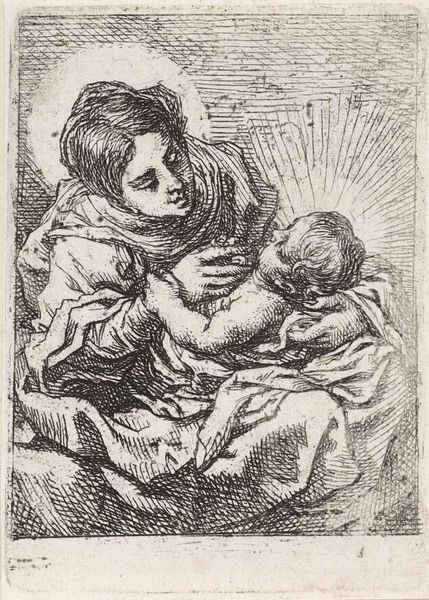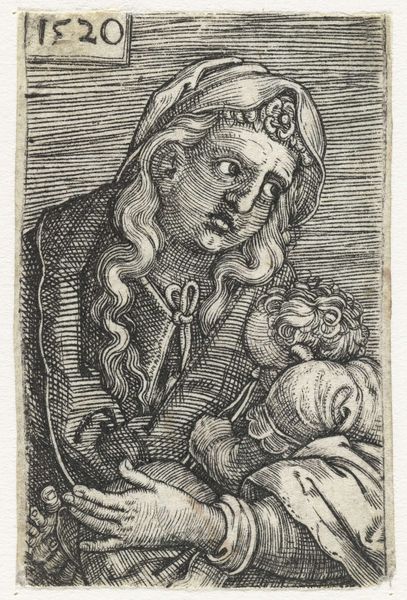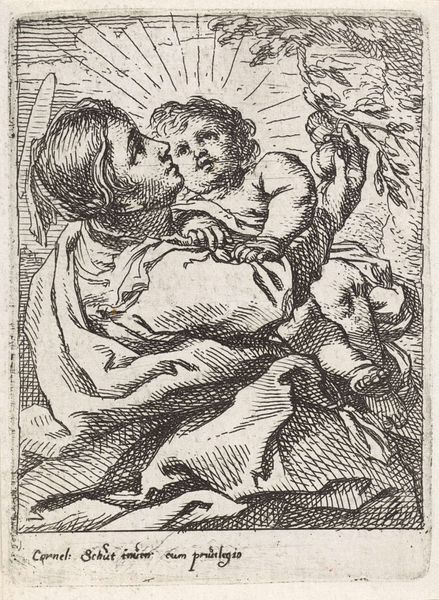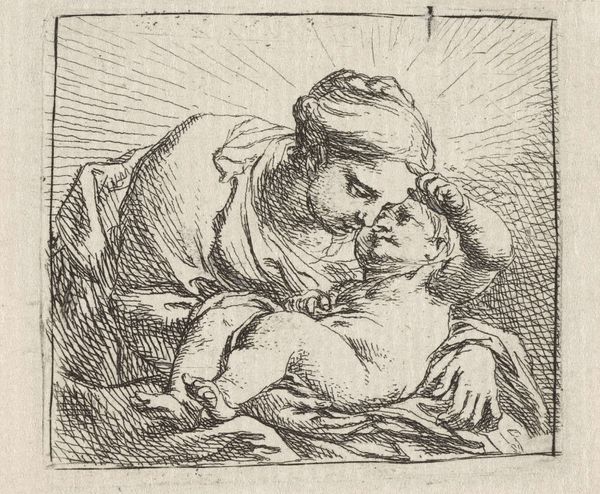
drawing, ink
#
portrait
#
drawing
#
baroque
#
figuration
#
ink
Dimensions: height 93 mm, width 73 mm
Copyright: Rijks Museum: Open Domain
Editor: Here we have Cornelis Schut’s "Madonna and Child," dating roughly from 1618 to 1655, a Baroque ink drawing now held at the Rijksmuseum. The detail is remarkable, considering it's just ink on paper. It feels both tender and strangely powerful. What strikes you when you look at this work? Curator: Ah, yes, a lovely piece. You know, I always get a feeling of quiet contemplation when I see this Madonna. Schut captures a moment of such intimate connection. Have you noticed how the radiating lines behind them almost trap them into this eternal moment of tender closeness, or are these rays of hope? What's the little apple, wrapped up in cloth, supposed to convey? Editor: It's the apple that intrigues me. Is it an offering or a symbol of...sin, maybe? It seems like such an odd little detail amidst the halo and the clear religious symbolism. Is that baroque love for mixing worldly elements into ethereal ones? Curator: Precisely! It’s a wonderful tension, isn't it? A push and pull. I'd hazard to guess the cloth softens the apple's harsh biblical meaning: a wrapped up tenderness that subdues original sin... Do you feel a sense of the personal in this work, beyond just the religious iconography? Editor: Definitely! It’s that apple wrapped up in cloth, and that slight imperfection above Mary’s lip: like this is the most special ordinary mother and baby that you know. Something about the expressiveness feels very, well, real. I wouldn't call her celestial in face as much as, simply, loving. Curator: That’s beautifully put! "Simply loving" -- it brings the divine down to earth, doesn't it? That, my friend, is the magic of art: revealing the extraordinary within the ordinary. What did this short examination help you realize, compared to when you first described the drawing? Editor: How the smallest of the "props" used by Schut— the folds of fabric caressing the apple — could communicate his whole mission of grounding baroque iconography. Curator: And I realize anew the gentle, almost motherly, impulse that can exist between the eye of the artist and the eye of the beholder across centuries!
Comments
No comments
Be the first to comment and join the conversation on the ultimate creative platform.

